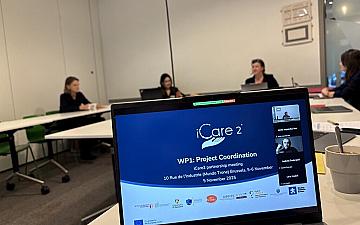The field of cosmetic plastic surgery and other beautification procedures is one of the most common topics among young people, as more and more women and men are undergoing various interventions.
The most common procedures are rhinoplasty, blepharoplasty, liposuction and breast augmentation. These interventions are associated with a tangible external change in the person who underwent them. Consultations shall usually be carried out with specialists in this field when deciding to perform such surgical operations. However, some of the side effects often remain neglected or hidden from the persons undergoing them.
Thus, an increasing number of young people resort to doctors' services without a genuine medical reason. Unfortunately, only after undergoing such operations do they begin to discover the downsides of the interventions.
In Bulgaria, not a small number of women undergo such manipulations. There are official statistics from the National Statistical Institute stating that in 2019, slightly more than 10,000 people underwent corrections. Observing the people surrounding us and considering the social networks and the established support groups, we can assume that this is not quite an accurate number. There appears to be massive disinformation in this sphere, not only because of the unrealistic statistical number of people who have undergone plastic surgery but also in terms of the risks such interventions pose.
By observing people's feedback on social networks and the established support groups, it can be concluded that, in reality, most of them are not well informed about the consequences that can occur as a result of cosmetic interventions. Often, these people turn out to be surprised and look for a way out of the situation by undergoing corrective operations of previous surgical procedures and even complete removal of inserted implants to return to their original condition.
When discussing the consequences of aesthetic surgery, first and foremost, the risk of potential rejection of the foreign body by the human organism should be mentioned. Often, when placing implants, the probability that the body will not accept the implant is not negligible. According to the British Association of Aesthetic Plastic Surgeons, around 50% of women with breast implant disease feel that their condition has improved and the symptoms have ceased after the implant has been removed, sometimes temporarily and sometimes permanently. Therefore, it appears that the sole removal of breast implants does not necessarily improve symptoms in everyone.
Symptoms themselves can vary and are unique in each case. They can appear anytime after surgery, some almost immediately, while others years later. Women suffering from breast implant disease experience various symptoms, including joint and muscle pain, redness, tiredness or chronic fatigue, continuous swelling around the breast implant, difficulties in concentrating and remembering, breathing problems, etc.
We cannot fail to mention the spread of these interventions among the youth aged 13-19. Statistics from the American Association of Plastic Surgeons indicate that, in 2020 alone, just under 230,000 young people underwent various plastic surgeries and other cosmetic manipulations. This statistic clearly shows the prevalence of plastic interventions among the youth. However, how many of these interventions are completed successfully and without side effects is information that we have nowhere to draw from. We can only extract such information from the persons suffering the adverse effects from such interventions, as there is no available comprehensive data from experts in this field.









